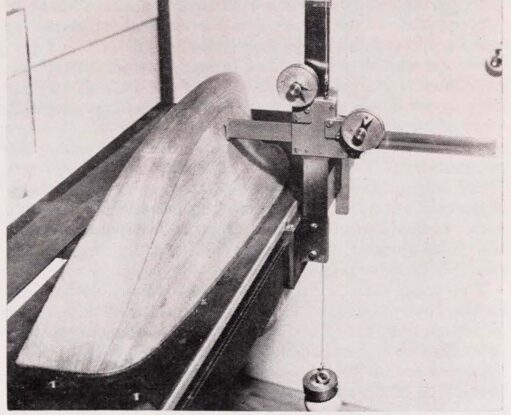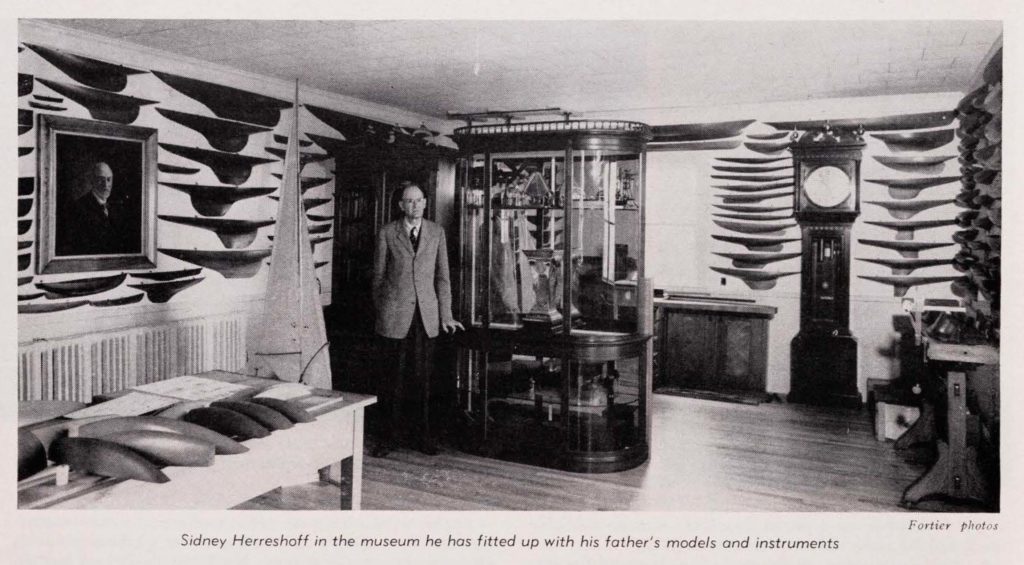December 15, 2021
This Month in Herreshoff History: “A Museum in Nat Herreshoff’s Memory”
"The Famous Designer's Son has Preserved his Models and Tools": an article by William H. Taylor

As we near the end of a year of celebrations to mark the 50th anniversary of the Herreshoff Marine Museum's founding as a public institution, we reflect on the earliest idea of a museum dedicated to the Herreshoff legacy. While L. Francis Herreshoff was publishing the serialized biography of his father in Rudder Magazine between January 1949 and April 1951, his elder brother A. Sidney Herreshoff was taking a different but equally important approach to preserving his father's - and HMCo.'s - legacy. While L. Francis was writing the narrative, A. Sidney was working to preserve the physical artifacts of Captain Nat's design process: the contents of the Love Rocks Model Room & Workshop. The following article by legendary yachting journalist William H. Taylor with photos by Norman Fortier was originally published in Yachting magazine in December 1954 and recounts a visit to A. Sidney's private "museum." The article is rich with detail about the Herreshoff legacy as it existed in the period between HMCo.'s closure in the winter of 1944-1945 and the Herreshoff Museum's establishment in 1971.

Click here to read "A Museum in Nat Herreshoff's Memory" as originally published in Yachting magazine, December 1954
We have also annotated a short excerpt below for those who want to learn more about some of the vessels called out in the article; links courtesy of the Herreshoff Catalogue Raisonné!
"Over the portrait are models of two boats that contributed greatly to their designer's fame in the early 1890s, the 46- footers Gloriana and Wasp. At the right, chronologically from top to bottom, are his America's Cup defense sloops Vigilant (1893), Defender (1895), Columbia (1899-1901), Constitution (beaten by Columbia in the 1901 trials), Reliance (1903) and Resolute (1920). Tucked in between Defender and Columbia is a little rowboat model marked "Columbia's lifeboat," a craft which proved so useful that hundreds of dinghies were built from that model.
Down the left side and beneath the painting are models of some (by no means all) of the yachts Captain at owned himself, starting at the top with Consuelo and Clara, cat-yawls he built in the '80s. Next come the hull of Dilemma (1891), the first successful fin-keeler, two successive Alerions [Alerion I, Alerion II], and Kildee. Beneath them come a series of steam and power boats-Item, Squib (a converted torpedo launch), Roamer (a roomy cruiser), Swiftsure (last of Herreshoff's fast steam launches), and Helianthus I, II and III (gasoline-powered cruising yachts). Directly under the painting is one of the most familiar models to modern yachtsmen, the last Alerion, built about 1912. It was from this model, with various modifications of the keel and other details, that the famous Newport 29- footers and later Fisher's Island 31s were built. As lately as 1953 a new boat, Daniel Morrell's Rogue, was built to lines taken off this model by Sidney Herreshoff. At the bottom are a number of small sailing craft the designer built for himself, mostly in his later years - Pleasure (still going strong as Mumsey), Water Lily, Possum, Oleander and a sailing dinghy.
In some ways the unmounted models-those that were never built from-are as interesting as those whose lines were translated full size. They show experiments in hull form, and they indicate that Captain Nat engaged in model making for its own sake. There are models he made of boats his father, Charles Frederick Herreshoff, built at Bristol as far back as 1834. One pair of models can only be described as cartoons of the types whose adherents waged the bitter "cutter-vs-sloop" controversy of the 1880s and '90s. One of these is a fantastically deep and narrow exaggeration of the extreme British cutter type; the other a very shallow hull which, from a nicely modeled, hollow bow widens out into a hull that is practically circular in plain view, carrying the New York Bay sloop type to its ultimate absurdity. Captain Nat must have chuckled as he shaped them..."
